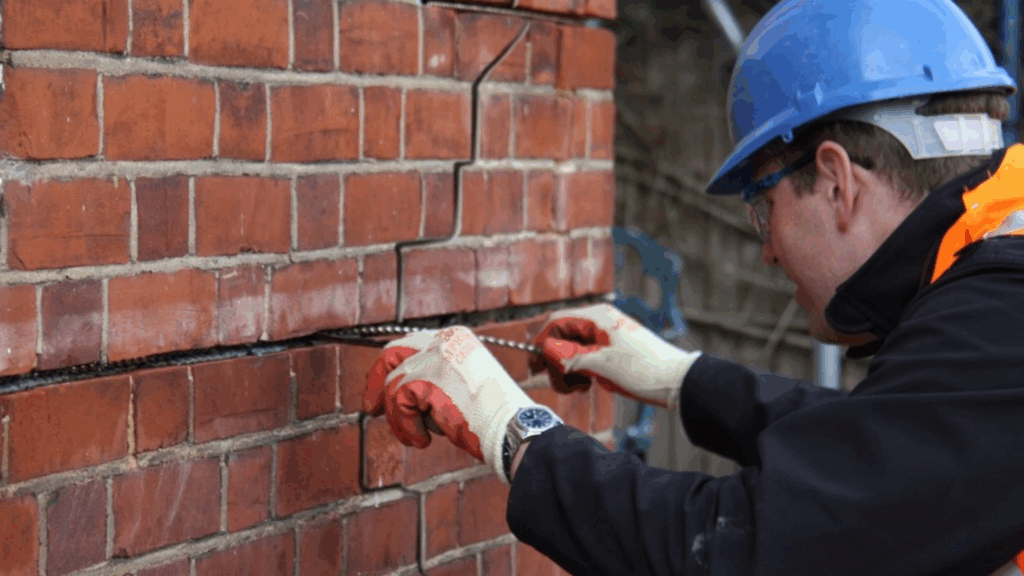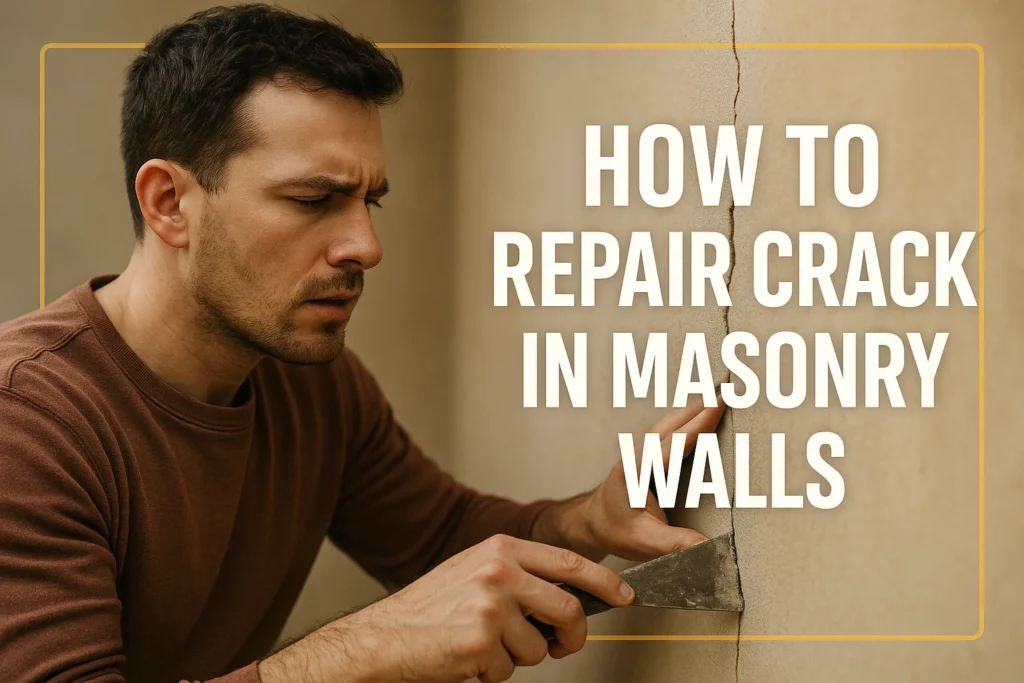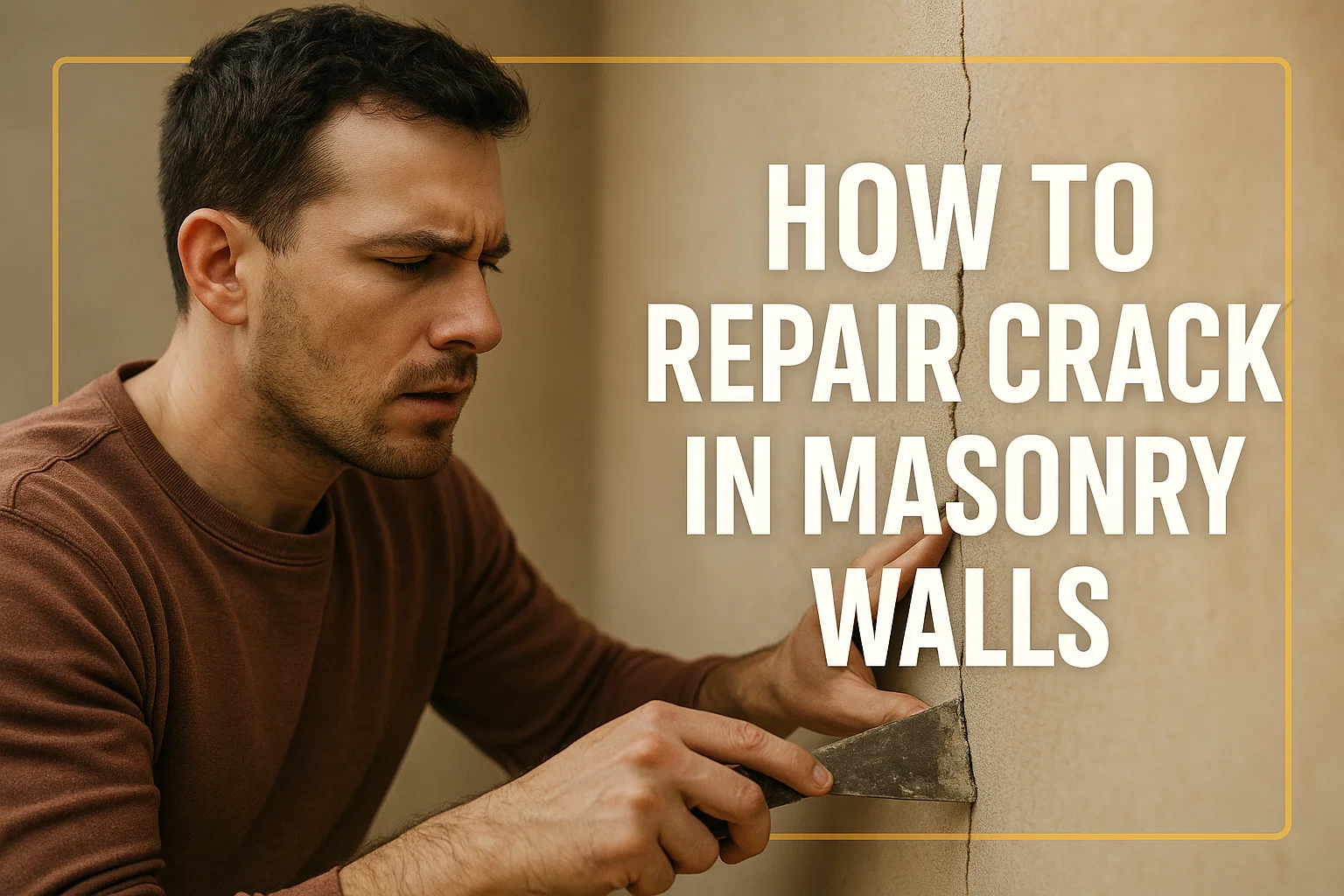Masonry cracks are one of the things that all homeowners fear to see. They are able to make your house look old, weak or neglected and sometimes even refer to larger structural issues. Be it a crack in a hairline or a bigger crack that runs through a block wall, the trick to dealing with it on the spot will save you money and would avoid damages in the future.
The good news? With the proper tools, materials, and a little patience, most of the masonry wall cracks can be repaired. We will take you through all these in this guide; why cracks occur, a step-by-step process of repairing them. You will also get some tips on how to avoid future damage and when it is good to seek the services of a professional mason.
Understanding Masonry Wall Cracks
It is only after knowing the reasons why cracks occur in block walls that one will plunge into the repair process.
Common Causes of Cracks in Masonry
Stone, concrete blocks, and bricks are both examples of masonry walls, and they experience stress over a period of time. Common causes include:
- Foundation settlement – The wall can crack in case the ground settles.
- Moisture damage – Water that penetrates walls makes the mortar weak and cracks.
- Temperature changes – Heat causes expansion, cold causes contraction, and it causes cracks.
- Poor construction – Weak areas may be caused by poor mortar or wrong construction.
- Heavy loads – Overweight on the structure exerts pressure on the walls.
Types of Cracks: Structural vs. Non-Structural
Not all cracks are the same. Knowing the type assists in determining the way of repair.
- Structural cracks – These are severe and they are normally a result of foundation issues. These can either be wide, diagonal or stair-step shaped.
- Non-structural cracks – These are cracks that lie on the surface such as hairline cracks due to shrinkage or weathering. They are typically cosmetic yet require some consideration.
When to Worry About Cracks in Your Wall
The following are some of the warning signs that a crack may be more severe:
- Cracks wider than ¼ inch.
- Cracks that keep growing over time.
- Doors and windows near the crack don’t close properly.
- Walls bulging.
When they occur, then it might be time to invite a professional to mend block wall cracks.
Tools and Materials You’ll Need
The correct set of tools and materials should be used to repair the masonry cracks. This is what you will need in DIY project.
Basic Masonry Repair Tools
- Chisel and hammer – To take away old mortar.
- Wire brush – To dust off.
- Pointing trowel – This is used to apply mortar in a nice manner.
- Caulking gun –In case of sealant or epoxy.
- Mixing bucket – To prepare mortar or filler.
Choosing the Right Mortar or Filler
The type of material used will be determined by the type of crack.s
- Mortar mix – Ideally used in brick and block walls.
- Epoxy injection – Suitable in structural cracks required to be bonded.
- Masonry sealant – Applied to small cracks and to keep out the water.
- Hydraulic cement – Excellent in sealing water sensitive cracks.
Safety Gear for DIY Masonry Repair
Always take protection when working.
- Safety glasses
- Gloves
- Dust mask
- Sturdy work boots
Step-by-Step Guide to Repairing Masonry Wall Cracks

Now we will move down to the actual procedure: how to fix masonry cracks.
Inspecting and Preparing the Crack Area
Begin by making an accurate investigation of the crack. Is it shallow or deep? Does it go through several blocks? Look to see whether the crack is continuing to move (expanding) or not. Draw a pencil line on the ends of the crack and re-check in a few days to observe whether or not it extends.
Cleaning Out Loose Debris and Old Mortar
- Scrubbing Up Dust and Old Mortar.
- Open up a crack with a hammer and a chisel. This might sound odd, but it is better to widen the crack with the help of which the new mortar believes easier.
- Get rid of any old mortar or loose particles.
- Take a wire brush and scrub the crack and blow the dust away.
An uncontaminated surface guarantees that the bond of the repair material is good.
Applying Mortar, Epoxy, or Sealant
Now it’s time to fill the crack:
- For small cracks – Find a masonry caulk or sealant. Get it into a caulking gun and squeeze a continuous bead into the crack. Smooth it with a trowel.
- For medium cracks – Mortar is mixed as per the instructions. Make the mortar deep into the crack with a pointing trowel. Stamp it to eliminate air holes.
- For structural cracks – Apply an epoxy injection kit. The epoxy is pressurized into the crack and the two sides are bonded.
Finishing and Curing the Repair
After filling the crack smooth the surface with the trowel.
- In case you used mortar, spray the place lightly with water to keep it damp so that it would cure. This is to stop the mortar to dry too quickly and crack once more.
- At least 24-48 hours should be left between the repair and the addition of paint or a sealant.
- It is through this that now you understand how to effectively fill cracks in block walls and in brick walls.
Preventing Future Masonry Cracks
It is better to avoid cracks, although repairing them is also important.
Proper Drainage and Waterproofing
- One of the largest masonry enemies is water. To protect your walls:
- Install adequate gutters and downspouts.
- Do not put water on the foundation.
- Put exterior walls under waterproof sealant.
Controlling Temperature and Moisture Impact
- Large walls should use expansion joints to allow the walls to move naturally.
- Make sure there is good ventilation in the attic to prevent condensation.
- Avoid abrupt changes in temperature such as the pouring of hot water over ice.
Routine Maintenance Tips for Masonry Walls
- Check all walls at least two times a year to see if there are cracks or loose mortar.
- Repointment immediately when worn.
- Wash walls frequently to avoid dirt and growth of plants that make the mortar weak.
When to Call a Professional Mason
Sometimes DIY isn’t enough, especially for structural problems.
Signs of Serious Structural Cracks
- Cracks wider than ½ inch.
- Walls bowing or leaning.
- Cracks that reappear soon after repair.
- Water leaking through repaired areas.
Cost of Professional Masonry Crack Repair
A professional repair of block wall cracks with an average severity incurs an average cost of between 500 to 2500 dollars. There can be more repairs associated with the foundation.
Benefits of Hiring a Licensed Masonry Contractor
- Accurate diagnosis of the problem.
- Long-lasting repairs with proper materials.
- Warranty on workmanship.
- Saves time and ensures safety.
Conclusion
Cracks on the masonry can be frightening, but when handled with the proper attitude, then they can be controlled and mended. With the use of the correct tools and a step-by-step repair procedure, the majority of smaller and smaller cracks can be dealt with by yourself by comprehending the reasons and causes of the problem. Good drainage and preventative maintenance can further help a long way in helping to prevent future issues.
Whenever you have serious or recurring cracks, it is always a good idea to call a professional so that your house remains safe and sound.
Want expert help with block wall crack repair or any other masonry project? Visit Maura Mason Corporation today. Our skilled team offers professional repairs, inspections, and maintenance services to keep your walls strong and beautiful. Don’t wait until cracks become costly, explore more with Maura Mason Corporation and protect your property for years to come.
FAQ’s
Repairs made correctly and using good materials may come up to 10-20 and beyond.
In small cracks apply masonry sealant. In bigger ones, it is preferable to use mortar or epoxy.
Cracks that keep reoccurring normally imply structural problems. The foundation is to be inspected by a professional.
Mortar or special masonry fillers would be better as normal cement can contract and crack.
Yes, in little non-structural cracks. In case of larger cracks, hire an expert mason.





